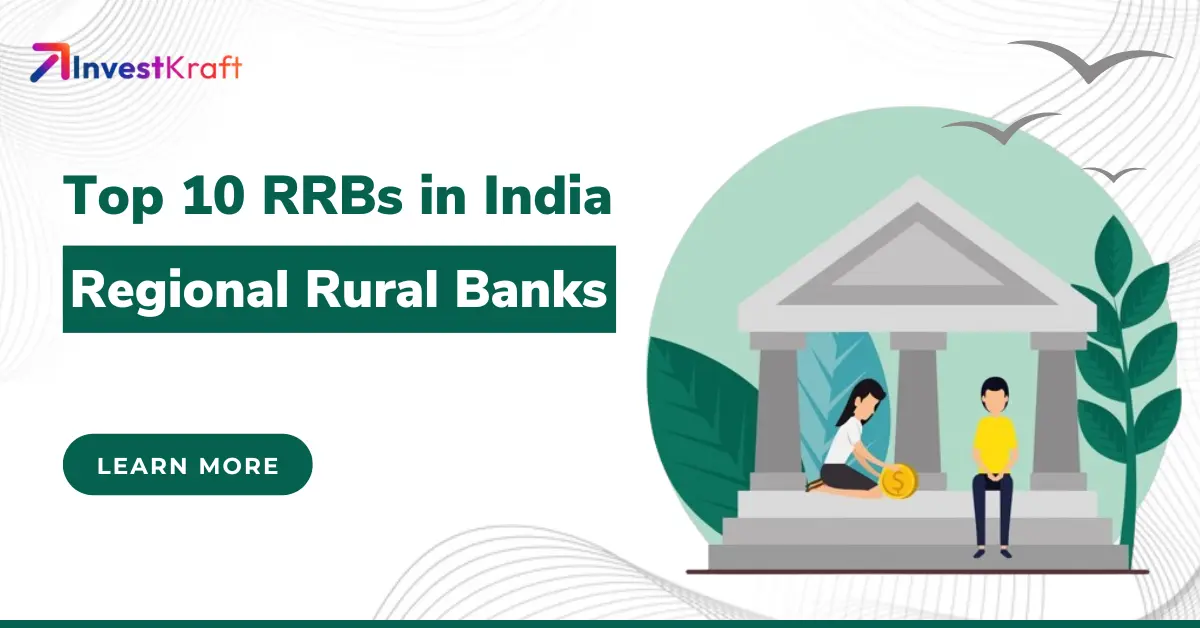List of Government Banks in India 2025 – Public Sector Banks & Their Role

In the dynamic landscape of the Indian banking sector, government-owned banks hold a significant position. These institutions, backed by the government, play a pivotal role in providing financial services across the country. Understanding the top government banks in India is crucial for investors, consumers, and policymakers alike. Let's delve into the key aspects of these institutions and their impact on the Indian economy.
Introduction to Government Banks
Government banks, also known as public sector banks (PSBs), are financial institutions where the majority stake is held by the government. These banks operate under the regulations and oversight of the Reserve Bank of India (RBI), the central banking institution in India. The primary objective of government banks is to promote financial inclusion, support economic development, and ensure stability in the banking system.
What are the Roles and Responsibilities of Indian Government Banks?
Indian Government banks, also known as Public sector banks (PSBs) have played a crucial role in India's financial landscape since the State Bank of India was nationalized in 1955, followed by additional nationalizations in 1969 and 1980. Despite challenging global conditions and economic turbulence, PSBs have fulfilled their mandate with support from the Government and the RBI.
- Maintaining Adequate Capital: In recent years, although credit uptake has been lower than anticipated, PSBs maintain appropriate capital adequacy, and deposit growth has remained steady. However, non-performing assets (NPAs) in PSBs have seen a significant increase, a trend that has been developing for some time. PSBs often operate under constraints and face challenges compared to private financial institutions. They are mandated to lend to certain risky sectors of the economy, sometimes due to political pressures. However, past experiences show that NPAs in PSBs can be managed with concerted efforts.
- Larger Exposure to Stressed Assets: PSBs hold a significant portion of stressed assets in sectors such as mining, iron and steel, textiles, infrastructure, and aviation, compared to private sector banks (PVBs). This is primarily due to their larger exposure to these industries. Despite higher NPAs, the overall performance of PSBs is comparable to that of PVBs when analyzed in detail. While PSBs focus on social objectives and banking the unbanked, they also compete effectively with PVBs on various financial parameters.
- Distribute Government Scheme Benefits at the Rural Level: PSBs have been at the forefront of rural banking and the implementation of government welfare schemes. Despite pursuing social goals, PSBs compete well with PVBs financially. Therefore, there is a need to evaluate PSBs and PVBs differently, considering the unique challenges faced by PSBs. For instance, PSBs opened a significantly higher number of Jan Dhan accounts compared to PVBs, reflecting their commitment to financial inclusion. Additionally, PSBs have consistently paid dividends, benefiting the government as the largest shareholder. As such, norms and benchmarks for PSBs need to be tailored to their unique circumstances in India.
You may also like: Top 10 Private Banks in India
List of Top 10 Government Banks in India in 2025
The list of top Government banks in India in 2025 contains only 12 names after major mergers. Before these mergers, the list of Indian Government banks comprised 22 names. The names of the top 10 Government banks in India have been provided in this section along with various of their parameters.
1. State Bank of India
State Bank of India (SBI) is an Indian government-owned bank based in Mumbai. With a history spanning over 200 years, SBI is widely regarded as the most trusted bank in India across generations. Service, transparency, ethics, politeness and sustainability are the core values of SBI.
Key Highlights of State Bank of India
- Largest Indian bank
- Dominates 1/4th of the total banking market share
- Serves more than 48 crore customers
- Currently has 65,627 ATMs/ADWMs
- Subsidiaries - SBI General Insurance, SBI Life Insurance, SBI Mutual Fund, SBI Card and more
- Present in 29 countries
2. UCO Bank
UCO Bank is a commercial bank owned by the Government of India. Established by Shri Ghanshyam Das Birla in 1943, its headquarters is located in Kolkata. With a wide range of banking products and services, UCO Bank prioritizes customer trust, as reflected in its tagline "Honours Your Trust."
Key Highlights of UCO Bank
- UCO bank has 3086 branches and 2236 ATMs spanning across 3 countries
- Renowned for providing innovative and best services regarding all banking needs
- Offers attractive interest rates
- Provides the best digital products in the banking sector in India
3. Punjab National Bank
Established on April 12, 1895, in Lahore, Punjab National Bank (PNB) was India's pioneer Swadeshi Bank. It started with an authorized capital of 2 lakh and a working capital of 20,000. PNB was born out of a nationalist spirit, being the first bank entirely managed and funded by Indians. Over its extensive history, PNB has absorbed nine other banks through mergers and amalgamations
Key Highlights of Punjab National Bank
- One of the largest Public sector banks in India
- PNB’s current global gross business is ₹ 22,90,742 Crore
- Highest “Low-Cost CASA Deposits” with 42.47% share
- In total, PNB has 52,331 delivery channels (29,768 Business Correspondents, 12,455 ATMs, 10,108 Domestic Branches and 2 International Branches)
- PNB has subsidiaries, joint ventures and representative offices in 5 countries (England, Bhutan, Nepal, Bangladesh and Myanmar)
4. Punjab and Sind Bank
In 1908, a simple yet powerful idea emerged to support the poorest in the region. From this notion, Punjab & Sind Bank was born, thanks to visionaries like Bhai Vir Singh, Sir Sunder Singh Majitha, and Sardar Tarlochan Singh, who were deeply esteemed by the people of Punjab. Built on a foundation of social responsibility, the bank aimed to assist the underprivileged in improving their livelihoods. Through the years, this commitment to social welfare remains steadfast, echoing the values of its founders.
Key Highlights of Punjab and Sind Bank
- Punjab and Sind Bank currently has a total of 1553 branches spanning across the length and breadth of the country
- The bank has grown at 40% year on year since 2004
- In the fiscal year 2019-20, the bank's total business reached Rs. 1,52,231.75 crore.
- Its operating profit for the same period amounted to Rs. 1097 crores.
- Gross non-performing assets (NPA) stood at 14.18%, totaling Rs 8875 crores, while net NPA was 8.03%, amounting to Rs 4684 crores.
- The provision coverage ratio as of March 31, 2020, was 66.74%.
- The bank's net worth as of March 31, 2020, was Rs. 2917 crore. Total income for the year reached Rs 8827 crore.
- The Capital Adequacy Ratio (Basel III) stood at 12.76% as of March 31, 2020.
5. Bank of Baroda
Bank of Baroda (BOB), founded on July 20, 1908, is a government-owned bank based in Vadodara, Gujarat, India. It recently merged with Vijaya Bank and Dena Bank as part of the 'Alternative Mechanism' scheme, effective from April 1, 2019. Bank of Baroda is among India's biggest banks, with a robust presence nationwide.
Key Highlights of Bank of Baroda
- Bank of Baroda currently has over 11,535 ATMs (cash recyclers inclusive) and more than 8,185 branches spread across India
- BoB also has 96 overseas branches spanning across 18 countries
- Names of wholly-owned subsidiaries of Bank of Baroda - BOB Financial Solutions Limited (previously BOB Cards Ltd.), BOB Capital Markets Limited, Baroda Asset Management India Limited, Baroda Trustee India Private Limited, BarodaSun Technologies Ltd and Baroda Global Shared Services Limited
- It has joint ventures for life insurance (India First Life Insurance Company) and infrastructure financing (India Infradebt Limited)
- It owns a 98.57% stake in the Nainital Bank and sponsors 3 regional rural banks (Baroda Gujarat Gramin Bank, Baroda Rajasthan Gramin Bank and Baroda Uttar Pradesh Gramin Bank)
- As of December 2021, BoB's deposits totaled Rs 9,78,034 crore, with Rs 8,76,555 crore in domestic deposits and Rs 1,01,479 crore in overseas deposits. Global advances amounted to Rs. 7,71,994 crore, including Rs. 6,54,315 crore in domestic advances and Rs. 1,17,679 crore in international advances.
6. Indian Overseas Bank
The Indian Overseas Bank was founded on February 10, 1937, to specialize in foreign exchange business in banking and to make the bank a global institution. Shri. M.Ct.M. Chidambaram Chettyar is the founder of the Indian Overseas Bank and was also the Director of the Indian Bank after his father died in 1929. Additionally, Mr Chettyar was also the founder of Travancore Rayons Limited and one of the founding members of United India Assurance.
Key Highlights of Indian Overseas Bank
- Indian Overseas Bank’s total business is more than INR 4,17,960 crores as of the latest
- IOB acquired 2 Mumbai-based local banks - Adarsha Janata Sahakari Bank and Shree Suvarna Sahakari Bank between 2001 and 2010
- By taking over the Bharat Overseas Bank, the international expansion of IOB started once again
- In 2020-21, Indian Overseas Bank emerged 2nd in terms of digital payment transactions among public sector banks
- IOB currently has more than 3222 branches and 3495 ATMs spread across the country in addition to more than 3222 business correspondents
7. Bank of India
Bank of India was established on September 7th, 1906, by a group of prominent businesspeople from Mumbai. Initially privately owned, it became a part of the nationalized banking system in July 1969 along with 13 other banks.
Starting with just one office in Mumbai, a paid-up capital of Rs.50 lakh, and 50 employees, the bank has experienced significant growth. Today, it stands as a formidable institution with a strong presence across the nation and substantial international operations. It holds a leading position in terms of business volume among nationalized banks.
Key Highlights of Bank of India
- Bank of India has more than 5100 branches all across the country, including specialized branches
- 13 NBG and 69 zonal offices control all the branches of the Bank of India
- BoI also has 45 global offices in 15 countries
- As per the latest data available, the total business of Bank of India stands at ₹1,037,549 crore (March 31, 2021)
8. Indian Bank
The Indian Bank was established on 05th March 1907 with only 20 lakh rupees as authorized capital. The bank started operations on 15th August 1907. Headquartered in Chennai, the Indian Bank was nationalized along with 13 other top banks in the country in 1969 (some available in this list as well). After its nationalization, all of IB’s foreign branches were seized to operate except two branches - Singapore and Colombo.
In 2020, the Indian Bank assumed control of the Allahabad Bank after a Union Cabinet-approved merger which resulted in the creation of 7th largest public sector bank in India. After the merger, IB’s asset worth reached 8.08 lakh crore rupees. The vision of Indian Bank is “Delivering excellence in financial services through customer focus, employee engagement and sustainable growth.”
Key Highlights of Indian Bank
- The global business of the Indian Bank was worth 11.64 lakh crore rupees in 2023
- As of December 2023, Indian Bank had 5835 branches spread across the country
- The total ATM and BNA (Bunch Note Acceptors) count of the Indian Bank was 4899 in addition to 10,942 business correspondents
- Indian Bank’s current customer base stands at over 100 million
- The bank has an international presence in over 75 countries through 227 overseas correspondent banks
- Indian Bank has a maximum presence in the Southern part of India followed by Central, Eastern, Northern, Western and North-Eastern parts of the country respectively
9. Bank of Maharashtra
Next on the list of top government banks in India is the Bank of Maharashtra which is headquartered in Pune, Maharashtra. BoM was established in 1935 by V.G. Kale and D. K. Sathe with USD 1 million as authorized capital. The bank started operations in 1936 and was primarily renowned for its financial assistance to small businesses and industrial houses. It is one of the 14 banks that was nationalized in 1969 by the Government of India.
Bank of Maharashtra’s vision statement is as follows - To be a vibrant, forward-looking, techno-savvy, customer-centric bank serving diverse sections of society, enhancing shareholders’ and employees’ value while moving towards global presence.
Key Highlights of Bank of Maharashtra
- Bank of Maharashtra has the largest branch network of any nationalized bank in Maharashtra
- In 2022-23, BoM emerged as the top performer among all public sector lenders in deposit growth percentage and loan percentage
- Bank of Maharashtra’s Pune branch recorded the highest profitability growth in 2022-23 with a growth rate of around 126 percent
10. Central Bank of India
The Central Bank of India was founded in 1911 and is India’s one of the largest and oldest nationalized commercial banks. The Ministry of Finance owns the Central Bank of India, which is headquartered in the financial metropolis of the country - Mumbai. Despite being named the “Central Bank of India”, RBI is India’s central bank. The bank was founded by Sir Sorabji Pochkhanawala and it holds the pride of being India’s first commercial bank which was wholly owned and managed by Indians. The government of India nationalised CBI in 1969 along with 13 other banks.
In the list of top Indian government banks, the Central Bank of India possesses all the qualities of an “All India Bank” due to its large distribution network across all the states and union territories.
Key Highlights of Central Bank of India
- The Central Bano of India currently has 4493 branches spread across all the states and UTs in India
- It also has 1 extension counter and 20 satellite offices in different parts of the country
- HDFC, LIC, UTI, IDBI, ICICI and many such major corporate houses in India form the corporate client list of the Central Bank of India
- Currently, the Indian government holds 93.08% shares of Central Bank of India
11. Union Bank of India
The Union Bank of India came into existence in 1911 in Mumbai under the visionary leadership of Seth Sitaram Poddar. The head office building of UBI in Mumbai was inaugurated in 1921 by Mahatma Gandhi. In 1947, UBI had only 4 branches but post-nationalisation in 1969, it had 240 branches. In addition to international expansion during its later phase, the Union Bank of India also incorporated the Andhra Bank and Corporation Bank in 2019. The merger resulted in UBI becoming the 5th largest public-sector bank in India with assets worth 14.59 lakh crore rupees.
Key Highlights of the Union Bank of India
- The Indian government holds 74.76 percent of the bank’s total paid-up capital
- UBI currently has more than 8450 domestic branches which employ more than 76,000 employees
- UBI has more than 9800 ATMs and around 19,000 business correspondents all across the country
- By 2023, UBI did a total business of Rs. 2,068,429 crore, comprising Rs. 1,172,455 crore of deposits and Rs. 8,95,974 crore of advances
- Of all the large public sector banks in India, UBI is the first bank that has implemented a 100% core banking solution
12. Canara Bank
Renowned for its unwavering dedication to customer centricity, Canara Bank was established by Shri Ammembal Subba Rao Pai, an eminent visionary and philanthropist, in July 1906 in Mangalore, a modest port town in Karnataka at the time. Throughout its existence spanning over a hundred years, the Bank has experienced various phases of growth and development.
In June 2006, Canara Bank marked its 100th year in the Indian banking sector, having achieved multiple milestones and securing a leading position among Indian banks.
Key Highlights of Canara Bank
- Canara Bank is India’s 4th-largest public sector bank whose current total business worth is 15.20 lakh crore rupees
- According to the latest data, 62.93% of Canara Bank’s shares are with the promoters and the rest 37.07% are with the public
- Canara Bank has multiple subsidiaries and also sponsors 4 regional rural banks
- Canara Bank has initiated a “Solar Loan” program in partnership with UNEP
- As of December 2023, Canara Bank serves over 113 million customers through a comprehensive network comprising 9,585 branches and 12,120 ATMs/Recyclers, strategically spread across all Indian states and Union Territories.
Conclusion
The top 10 government banks highlighted in this article - including stalwarts like State Bank of India, Punjab National Bank, and Bank of Baroda, among others - showcase a diverse range of services, robust infrastructures, and extensive reach across the nation. Each institution brings its unique strengths to the table, whether it's SBI's unparalleled market dominance, PNB's extensive global presence, or Bank of Maharashtra's focus on small businesses.
As the banking landscape evolves with mergers and technological advancements, government banks remain steadfast in their mission to serve the nation. By leveraging innovation, embracing digital transformation, and upholding principles of transparency and customer-centricity, these banks are poised to navigate future challenges and contribute significantly to India's economic growth story.
In the ever-changing dynamics of the financial sector, government banks stand as pillars of stability, ensuring that the wheels of India's economy continue to turn, driving prosperity and progress for generations to come.

Author: Abhik Das
Abhik Das is a versatile content writer with over 5 years of experience crafting engaging and informative content across diverse industries. His expertise spans the fields of ed-tech, pharmaceuticals, organic food, travel, sports, and finance.
Here's what sets Abhik apart:
Content Versatility: Able to adapt writing style and tone to suit various audiences and content needs.
SEO Proficiency: Creates content optimized for search engines, ensuring discoverability and organic traffic.
Deep Research: Conducts thorough research to ensure content accuracy and credibility across complex topics.
Engaging Storytelling: Captures reader interest with clear, concise, and compelling writing.
Abhik's diverse background empowers him to deliver insightful content across a wide range of subjects. Whether you're seeking engaging explainer pieces on the latest financial trends, informative guides to organic food choices, or captivating travelogues, Abhik has the expertise to craft content that resonates with your audience.







.webp)












